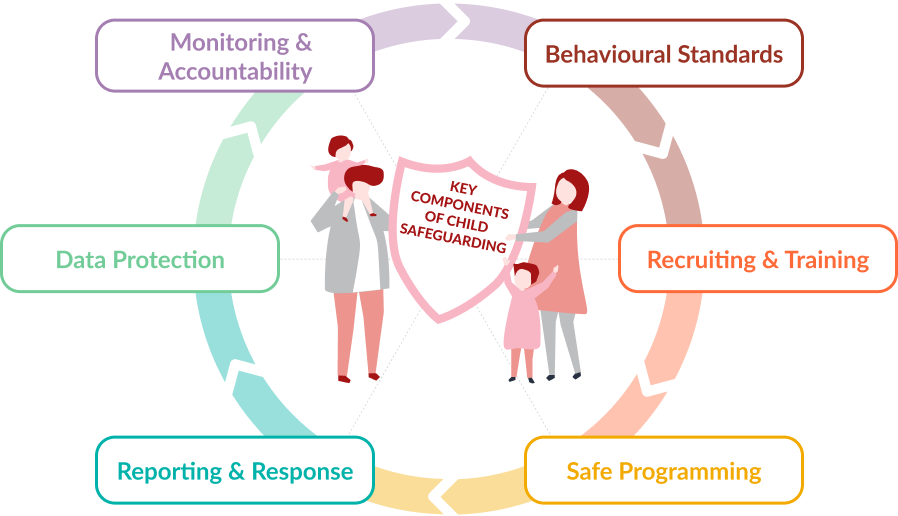WHAT IS CHILD SAFEGUARDING
Child Safeguarding refers to the responsibility of an organisation to ensure that all the children they engage with are protected from the risk of or actual harm. Child Safeguarding involves putting into place certain protocols and practices to ensure that your organisation’s representatives, projects, and operations do no harm to the children you engage with.
KEY COMPONENTS OF CHILD SAFEGUARDING
child safeguarding, en

Monitoring & Accountability
The mechanisms that ensure the organisation’s policies and procedures are effective, and that all organisation representatives uphold their responsibility to protect children.
Behavioural Standards
The boundaries that ensure safe and appropriate contact between children and the organisation’s representatives.
Recruiting & Training
The steps taken to ensure that the organisation only recruits those individuals who are suited to work with children, and builds representatives knowledge on the risks to children and their duty of care to keep children safe.
Safe Programming
The measures that ensure all of the organisation’s services are designed, delivered, and monitored using a child-safety perspective of ‘do no harm’.
Reporting & Response
The systems that ensure all child-safety concerns are reported and handled, including referrals to local child protection units where needed, in a manner that prioritises the best interests of the child.
Data Protection
The processes that ensure all sensitive and personal information, especially children’s data, is obtained, handled, shared, and secured in an respectful, professional, and safe way.
Behavioural Standards
The boundaries that ensure safe and appropriate contact between children and the organisation’s representatives.
Recruiting & Training
The steps taken to ensure that the organisation only recruits those individuals who are suited to work with children, and builds representatives knowledge on the risks to children and their duty of care to keep children safe.
Safe Programming
The measures that ensure all of the organisation’s services are designed, delivered, and monitored using a child-safety perspective of ‘do no harm’.
Reporting & Response
The systems that ensure all child-safety concerns are reported and handled, including referrals to local child protection units where needed, in a manner that prioritises the best interests of the child.
Data Protection
The processes that ensure all sensitive and personal information, especially children’s data, is obtained, handled, shared, and secured in an respectful, professional, and safe way.
Monitoring & Accountability
The mechanisms that ensure the organisation’s policies and procedures are effective, and that all organisation representatives uphold their responsibility to protect children.
WHY IS CHILD SAFEGUARDING IMPORTANT FOR YOUR ORGANISATION?
Families and communities trust organisations to keep their children safe. It’s up to organisations to set standards and guidelines that ensure:
Contact us to help your team understand their duty of care towards children and the steps they must take to create an environment that prioritises children’s best interests.

